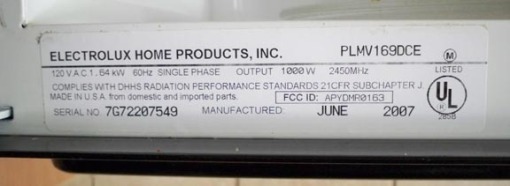In honor of Earth Day, my TWT posts will center on energy and “green” concepts this month.
kWh stands for Kilowatt Hour, which is the measure of energy used by your electric company to figure your bill. A kilowatt hour is equivalent to using 1000 watts of electricity in one hour.
You can figure how many kilowatt hours an electrical appliance uses by multiplying its wattage by the amount of time you are using it, and dividing by 1000. So, for example, (caution! english major doing math here!) if you have a 100 watt light bulb in your lamp, and you have the lamp on for one hour, you use 0.1 kWh of electricity. If you keep that same lamp on for 10 hours, you’ve used 1 kWh. You can use this simple equation to figure out the electrical usage of many of the small appliances in your home, which are usually labeled with their wattage rating.
(wattage x amount of time used)/1000 = kWh
Here in Central Arkansas, a kilowatt hour costs about 12 cents after taxes and fees. You can figure out your cost per kWh by looking at your energy bill. Divide your total bill cost by the amount of kWh used, and you’ll have your per kWh cost.
So, you can save a substantial amount of money by decreasing the number of kilowatt hours you are using in your home. Do you know what the biggest energy user in your entire house is? Your refrigerator! Obviously you need to use your fridge, and it has to be plugged in all the time, but you can reduce energy use by turning the temperature up to a medium setting in your fridge. If you have two refrigerators, and your last name is not Gosselin or Duggar, GET RID of ONE! If you are looking to buy a new refrigerator, pay close attention to the energy use ratings. Look for the Energy Star logo, and avoid the side-by-side models, which are the least efficient.
The second biggest energy sucker? Your clothes dryer. Now that the weather is getting nice, you can easily reduce your costs of drying clothes – the sun is free, and has many benefits that you can read about in my previous post, Ode to my Clothes Line.
And finally, don’t forget the little guys. Even when they are not in use, small appliances like toasters, coffee makers, phone chargers, and hair dryers still pull wattage out of your electrical sockets. If you start unplugging five of these small appliances when you’re not using them, you’ll save enough money each week to buy yourself a latte.
What can you do in your house to decrease your watts?
Do you have questions about other energy or earth-friendly concepts? Let me know and I will do my best to address them!



April 8, 2010 at 6:12 pm
I have no official comment, except to say your Gosselin/Duggar comment made me laugh : )